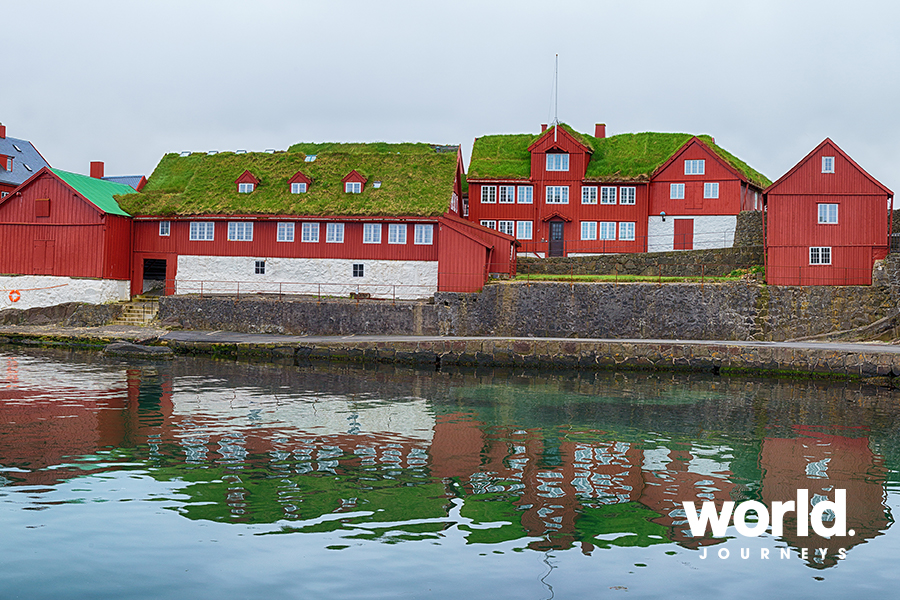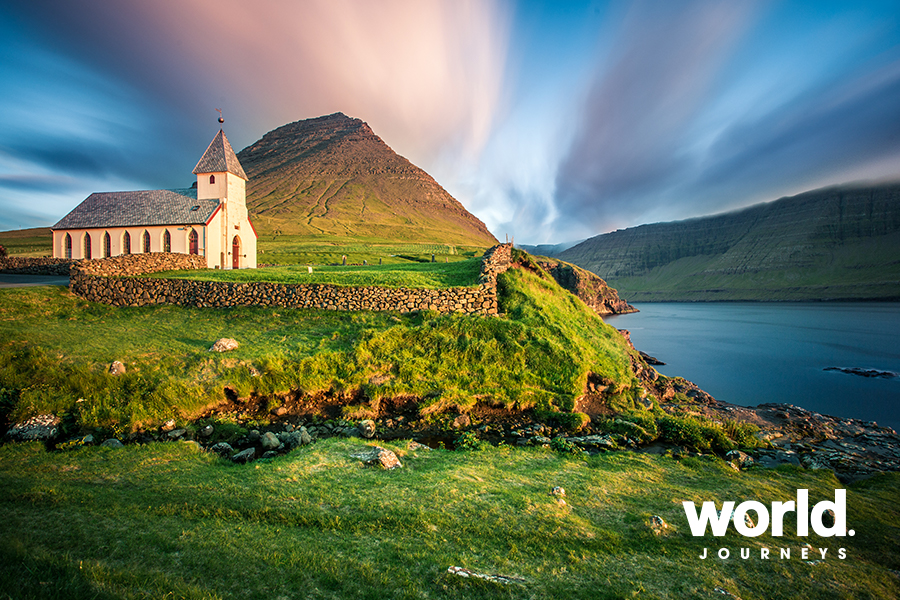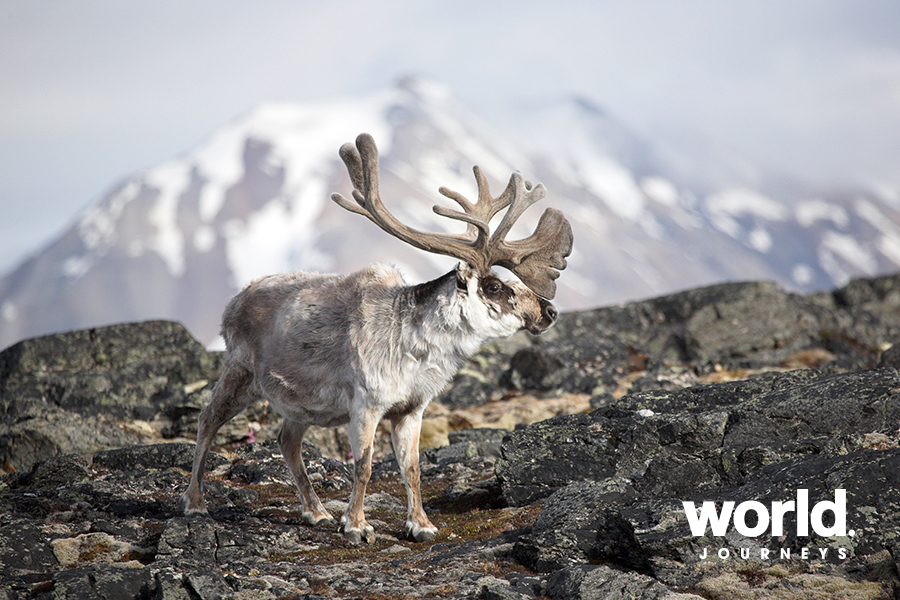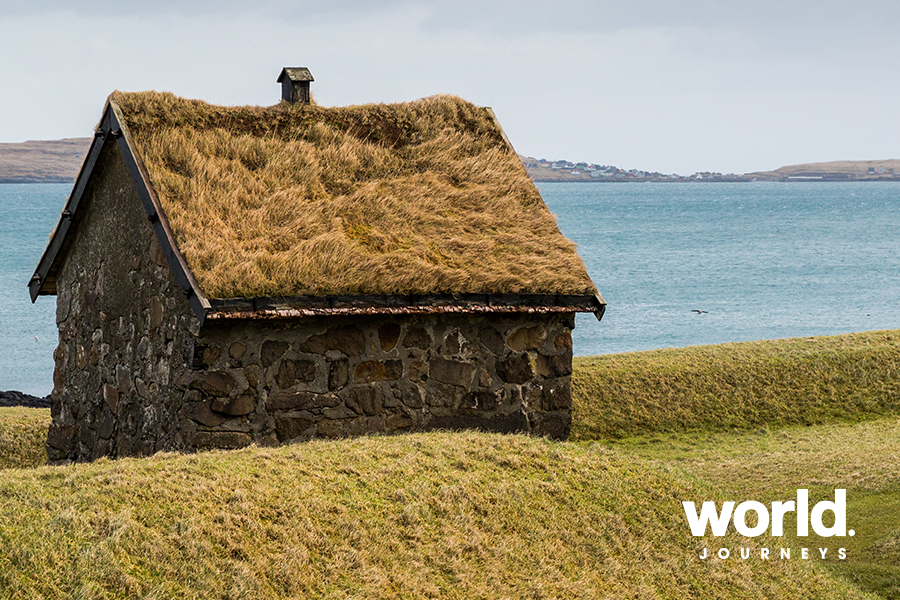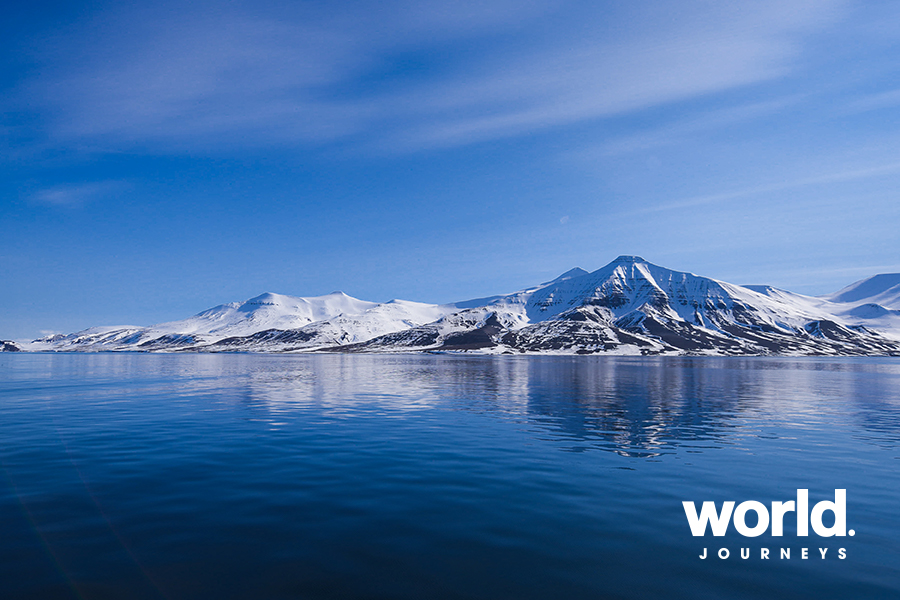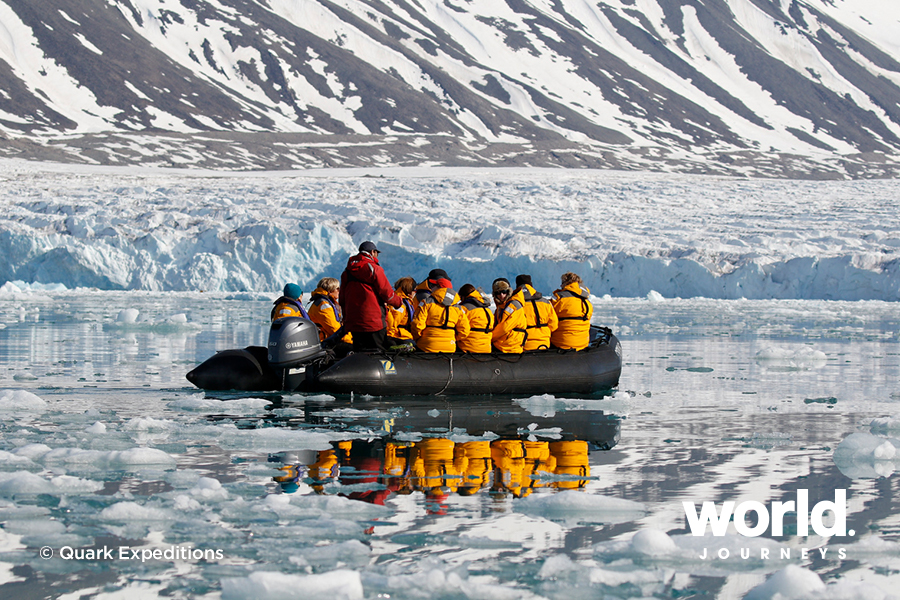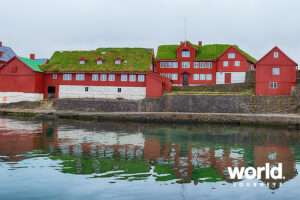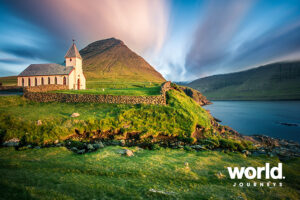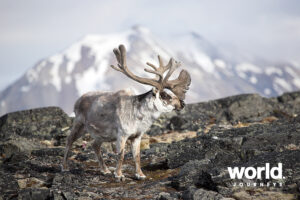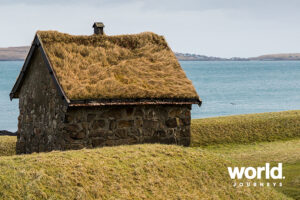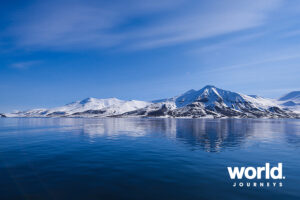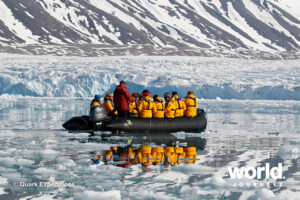Arctic Saga: Exploring Spitsbergen via Faroes & Jan Mayen
With Quark Expeditions
| PRICE FROM | DURATION | |
|---|---|---|
|
USD
$15,395
|
Days
14
|
Nights
13
|
| PRICE FROM | DURATION | |
|---|---|---|
|
USD
$15,395
|
Days
14
|
Nights
13
|
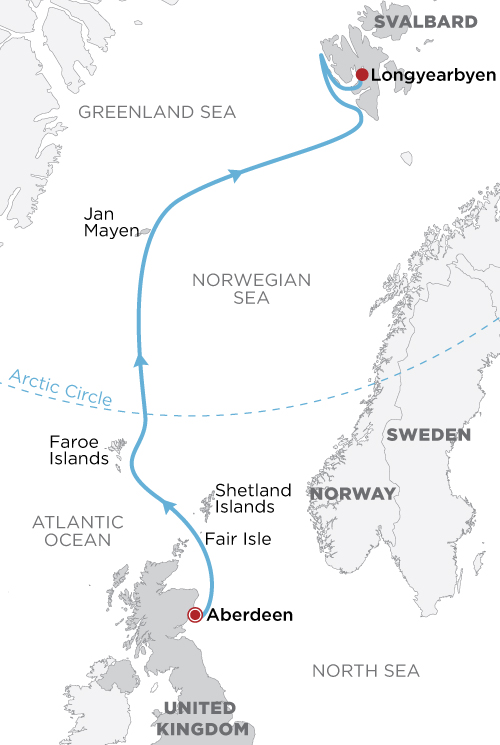
Introduction
Ideal for first-time guests to the polar regions, this voyage allows you to venture to some of the most remote islands on Earth, observe fascinating history and culture, and experience the dreamlike wonder of the midnight sun.
Sailing across the North Atlantic, you will be immersed in the Arctic’s rugged beauty, highlighted by visits to the awe-inspiring and unspoiled destinations of Fair Isle, the Faroe Islands, Jan Mayen and Spitsbergen, immersing you in the region’s rugged beauty and whaling and Viking history. Discover towering fjords, massive glaciers, soaring sea stacks and coastal cliffs teeming with thousands of seabirds.
Highlights include: Follow in the footsteps of the Norsemen on Fair Isle and the Vikings in the Faroe Islands, explore the volcanic and glacier covered Jan Mayen island, encounter iconic arctic wildlife, such as puffins, reindeer, whales and seabirds; and cruise in a Zodiac to explore diverse landscapes and wildlife.
Your Ship: The Quark Expeditions fleet never exceed more than 200 passengers per vessel, which gives guests the best polar experience on a smaller ship. Their ice strengthened vessels are built for challenging polar environments, taking you to places ordinary cruise companies wouldn’t dream of going.
Ultramarine: The newest ship in the fleet and equipped with two twin-engine helicopters, offering a robust portfolio of activities and and the most spacious suites in its category. Features include breathtaking public spaces, and more outdoor wildlife viewing spaces than other ships its size.
Arctic Itineraries:
Please enquire about other itineraries in this region.
Itinerary
Day 1 : Aberdeen, United Kingdom
Arrive any time on Day 1 and make your way to your included hotel. The Scottish city of Aberdeen has many monikers, but its most famous is Granite City, as it was once the granite capital of the world. Wandering the streets, you’ll soon see why, as the Victorian buildings sparkle in the sun. A bustling cultural hub, Aberdeen also offers a range of museums, galleries, theatres, shops, cafes and restaurants to explore.
Day 2 : Embarkation Day
Today you will have some free time before being transferred to the port to board your ship. As you set sail this afternoon, you’ll want to be out on deck, camera in hand – the area’s coastal waters offer excellent possibilities for spotting bottlenose and white-beaked dolphins, harbour porpoises and minke whales.
Day 3 : Exploring Fair Isle
The UK’s most remote inhabited island, the extraordinary Fair Isle is located halfway between the Shetland and Orkney Islands. Boasting a rugged beauty, Fair Isle’s landscape is diverse, with fields and moors dominated by seaside cliffs and an astounding amount of sea stacks, natural arches and caves.
Despite its small size, the island offers activities for history, nature and photography buffs alike. Visit the museum to immerse yourself in local artifacts, photos, knitwear and other historic memorabilia. Don’t forget to snap a shot of the circa 1935 classic red phone booth by the post office!
In terms of wildlife, orcas are native to the waters around Fair Isle, and they sometimes come close in pursuit of seals. But the island is best known for its coastal cliffs teeming with seabirds in spring and summer. The star attraction is the Atlantic puffin, a clown-like bird that clings to the steep slopes. Photographers will surely want to capture pictures of their bemused expressions, and Fair Isle’s easily accessible grassy banks make it one of the best places in the Shetlands to observe these colourful creatures. Northern fulmars, kittiwakes, storm petrels, razorbills and guillemots are also likely to be spotted, soaring over the open waters.
Visitors to this community of crofters, artisans and artists may be able to pick up a traditional Fair Isle sweater to keep you warm during the rest of your arctic voyage. Be sure to try one on, along with a matching hat, scarf and mittens, at the town hall.
Days 4 & 5 : Exploring the Faroe Islands
Known for its beautiful, unspoiled landscape, with verdant pastures giving way to rugged, steep cliffs, the Faroe Islands have a storied past, though the details of the archipelago’s early history are a bit hazy. The first settlers may have been 7th century Irish monks seeking solitude on these islands far removed from any continent. Their isolation ended in 800 AD with the arrival of Norse farmers, and Norwegian colonisation continued throughout the Viking Age. Today, many of the inhabitants of the Faroe Islands, now a self-governing country within the Kingdom of Denmark, are descendants of Norwegian Vikings.
You will have two days to explore this unspoiled and seldom-visited archipelago made up of 18 rugged islands located about halfway between Scotland and Iceland. The mighty North Atlantic is omnipresent wherever you go with no place on the Faroe Islands farther than 5 km from its shores. The sea has always dominated life on the Faroes – throughout history as much as today: rich fisheries, magnificent ocean views and thriving sea bird colonies make up this rare Nordic jewel that is often referred to as Europe’s best kept secret.
Spend a day exploring the outer islands of the archipelago which are separated by narrow sounds and fjords and delight in their surreal landscapes, dramatic cliffs, rock formations, and green valleys engulfed by steep mountains, protecting small picturesque villages with colourful turf-topped houses. Wind, weather and sea conditions will influence and shape your activity options, but of course always keep your eyes out for marine and bird life, especially the iconic Atlantic puffin.
Your second day in the Faroes will be dedicated to the capital city of Torshavn, where the Vikings established their government in 825 AD. One of the world’s smallest capitals, the picturesque Torshavn has a relaxed vibe and a number of historical and cultural sites. Meander the maze of narrow laneways of the Old Town, admiring the quaint wooden houses with traditional sod roofs and white paned windows. If you’re looking for more action, a hike up to the historic fort, built in 1580 to guard against pirate raids, offers stunning views of the port below. Or perhaps you prefer to wander the charming harbour, filled with cafes, pubs and old warehouses, and simply gaze out at the sea while sipping a latte.
Days 6 & 7 : At Sea
Say goodbye to the Faroes as you cruise towards the world’s most northerly volcanic island, Jan Mayen. There are several activities to keep you engaged while at sea. Learn to identify seabirds gliding alongside your ship, attend dynamic presentations by your Expedition Team, relax in the polar library or simply spend some time on deck, admiring the sea. With your binoculars and camera at the ready, keep your eyes peeled for the blow of a humpback, blue or fin whale. Encounters with minke whales or orcas are also possible, since their curiosity can bring them near the ship. If you’re lucky, you may even see harp seals.
Days 8 & 9 : Exploring Jan Mayen
North of the Arctic Circle, about 450 km east of Greenland and 550 km north of Iceland, is the mysterious Jan Mayen, deep in the North Atlantic Ocean. Often shrouded in thick fog, the small mountainous island was declared a nature reserve in 2010 and is rarely visited, save for the 18 rotating personnel of the Norwegian military and Norwegian Meteorological Institute, who are the only inhabitants.
Landing here will be dictated by the weather and sea. If conditions allow, as the ship approaches, keep watch on deck as the spoon-shaped island’s highest summit emerges. At 2,277 metres high, the breathtaking Beerenberg volcano features a symmetrical cone shape and impressive glaciers that spill into the sea. During the summer months, the island’s lower landscape is covered with grass, moss and a smattering of hardy flowers that add a cheery pop of color to the otherwise barren black lava terrain.
One site that may be possible to visit is Olonkinbyen and the surrounding area. Named after Russian-Norwegian polar explorer Gennady Olonkin, it’s the island’s only settlement and the location of the meteorological station, where you may have the chance to learn about polar research while seeing how weather is monitored at the top of the world. Another option might be the black sand beach at Kvalrossbukta, where the remnants of a 17th century Dutch whaling station and a large fulmar colony can be found. In 1632, two Basque ships landed at the small bay and plundered the station. A Dutch party was sent here the following year to protect the land stations during winter, but all seven men perished from scurvy. Whaling in the area came to an end about 20 years later.
If you’re fortunate, you may view the volcano and the stratified cliffs of the spectacular north coast as you Zodiac cruise around the island, searching for wildlife. Designated an Important Bird Area by BirdLife International for the large numbers of breeding seabirds, Jan Mayen supports colonies of northern fulmars, little auks, glaucous gulls, kittiwakes, and black and Brunnich’s guillemots (thick-billed murres). And if you are fortunate, you might see ‘sea parrots’ (the Atlantic puffin) again. The waters here are rich feeding grounds for marine life, so keep a lookout for minke, fin, blue or humpback whales.
Day 10 : At Sea
As you sail farther north, spend some time with your shipmates in the lounge, swapping stories and photos, or pause for a moment on the bridge, joining in as your Expedition Team looks out for whales, seals and a variety of seabirds.
Days 11 – 13 : Exploring Spitsbergen, Svalbard
Rugged, wild, unspoiled and situated entirely within the Arctic Circle, the largest island of the Svalbard archipelago is unforgettable. From immense glaciers to polar deserts, the landscape here is as varied as the wildlife.
As you explore the fjords of the southwestern corner of this magical island, it won’t take long for you to see firsthand why Spitsbergen is the ‘wildlife capital of the Arctic’. Some areas you might be able to visit include Hornsund and Bellsund fjords and the Lilliehook Glacier.
The possible landing sites at Hornsund, the island’s most southerly fjord, have rich histories. En route to Isbjornhamna, a bay at the southern end, where you might explore the former science station, you may have the opportunity to discover old whale bones. You may spot Svalbard reindeer and colonies of delightful little auks.
A 20 km long sound, Bellsund lured miners a century ago to its natural resources. Today, visitors come to Bourbanhamna and Calypsobyen to see historic mining and trapper sites and marvel at the magnificent vistas. It may also be possible to hike along the colourful tundra, dotted with flowers bursting for a taste of sunshine. Viewing reindeer here is likely, as they frequent the area.
Day 14 : Longyearbyen, Norway > Helsinki
The time has come to say farewell to your newfound friends and Expedition Team. After disembarking in the frontier-style settlement of Longyearbyen catch your charter flight to Helsinki.
Important Reminder
Embracing the unexpected is part of the legacy – and excitement – of expedition travel. When traveling in extremely remote regions, your Expedition Team must allow the sea, the ice and the weather to guide route and itinerary details. This itinerary is a tentative outline of what you’ll experience on this voyage; please be aware that no specific itinerary can be guaranteed. By the same token, wildlife encounters as described are expected but not guaranteed. Your Expedition Team will use their considerable experience to seek out wildlife in known habitats, but the presence of any particular species of bird or marine wildlife is not a guarantee.
Need Help?
Pricing
Pricing (per person), USD
TYPE |
TWIN from |
SINGLE from |
EXTRA from |
|---|---|---|---|
| 2025 | |||
| 29 April, Ultramarine | |||
| Explorer Suite |
US$15,395 |
– |
|
| Balcony Suite |
US$16,995 |
– |
|
| Deluxe Balcony Suite |
US$19,995 |
– |
|
| Mandatory Transfer Package |
US$695 |
Special Offer
Save up to 30%!
Save up to 30% on the April 2025 departure. Savings apply to the voyage-only cost, apply to new bookings only, vary per cabin category, and are based on availability at the time of booking.
Departs
| 2025 |
| 29 April |
Included
- Experienced Expedition Leaders throughout your voyage
- All Zodiac transfers and cruising as per the daily program
- All shore landings as per the daily program
- Shipboard accommodation with daily housekeeping
- All meals, snacks, soft drinks and juices onboard throughout your voyage
- Select beer and wine during dinner; and coffee, tea and cocoa available 24/7
- Formal and informal presentations by our Expedition Team & guest speakers
- A photographic journal documenting the expedition
- A pair of waterproof boots on loan for landings and Zodiac cruising excursions
- An official Quark Expeditions parka to keep
- All miscellaneous service taxes and port charges throughout the program
- All luggage handling aboard the ship
- Emergency evacuation insurance up to US$500,000 per person
Not Included
- Gratuities; recommended US$10 to US$15 per person per day
- Mandatory waterproof pants for Zodiac landing and cruising excursions
- Laundry, bar, phone, internet, and other personal charges
- A mandatory transfer package (see price above) which includes: one night’s pre-cruise hotel night in Aberdeen; group transfer from Aberdeen hotel to ship on embarkation day, departure transfer and charter flight from Longyearbyen to Helsinki on disembarkation day
Important Notes
- Quark Expeditions pricing is dynamic and is therefore subject to change until the booking is confirmed
- Please enquire for pricing in Explorer Triple and the Terrace, Owner’s, & Ultra Suites
- Please also enquire for single pricing in categories other than Solo Panorama
- A luggage restriction applies on the charter flight; no excess option is available
Please refer to World Journeys terms & conditions
Related Blogs
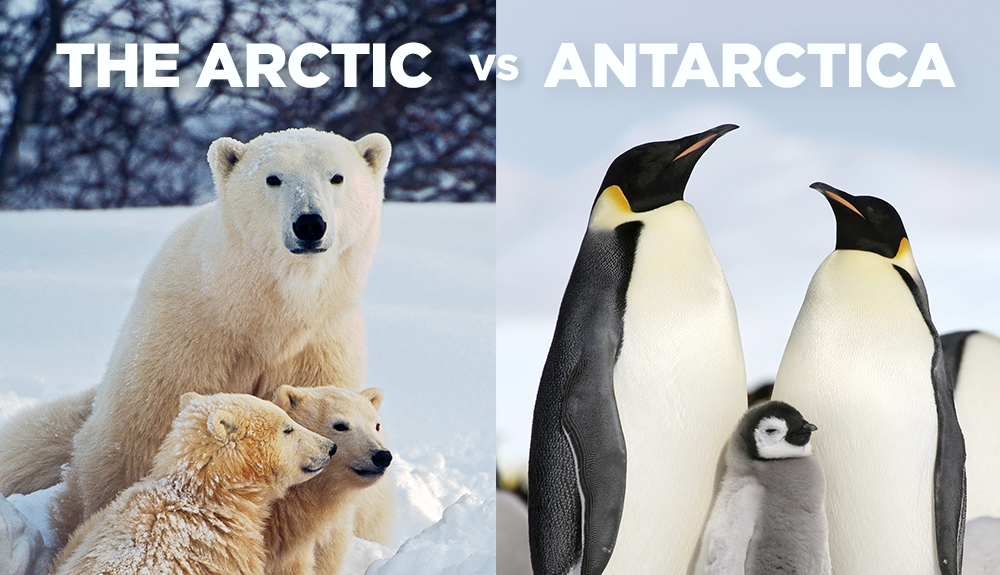
Arctic vs Antarctica
World Journeys
16 August 2017
The Arctic and Antarctic both conjure up images of cold,…

